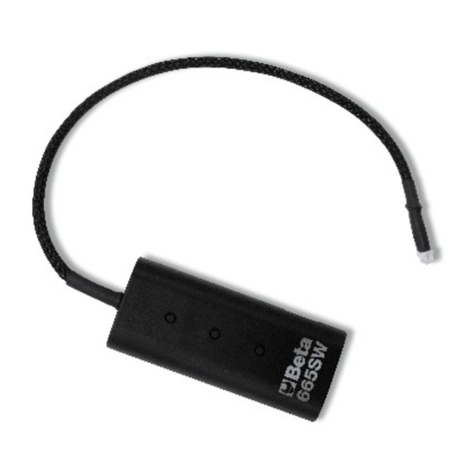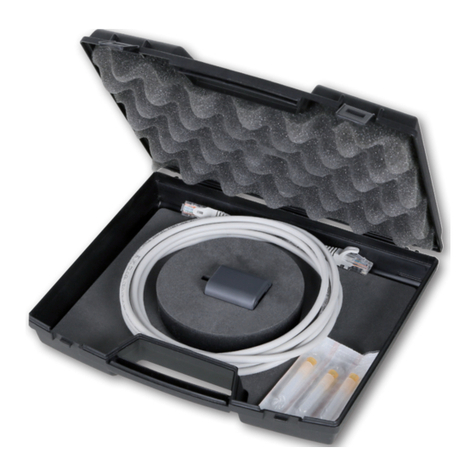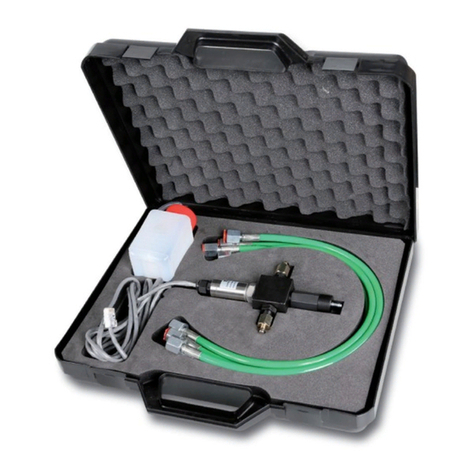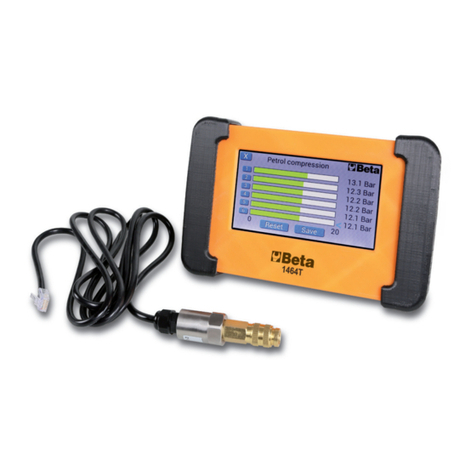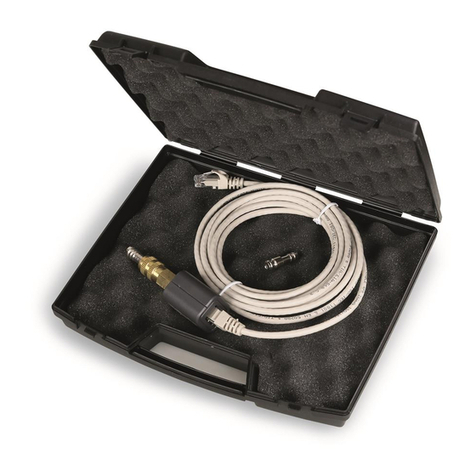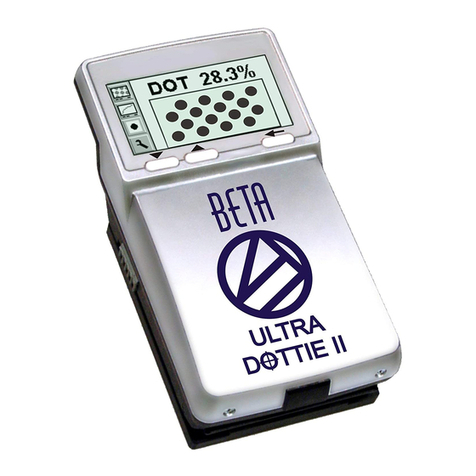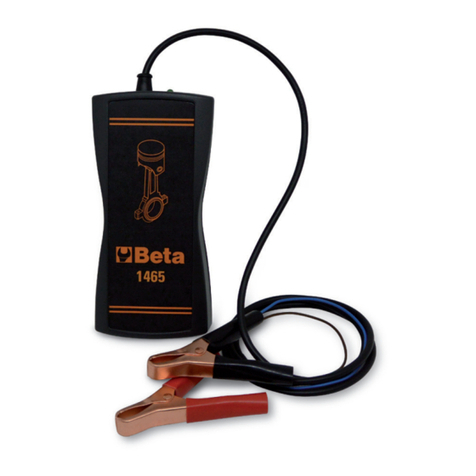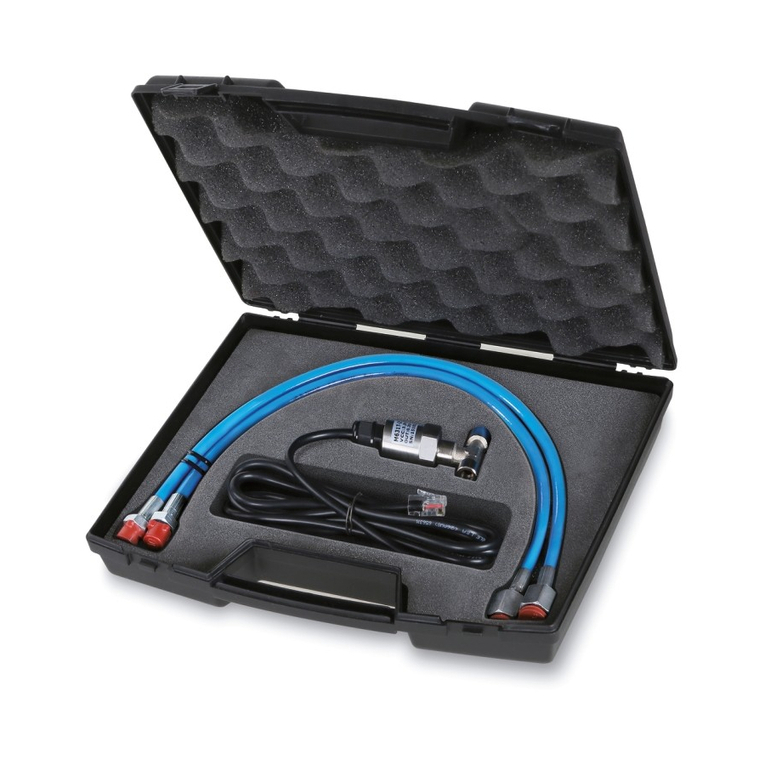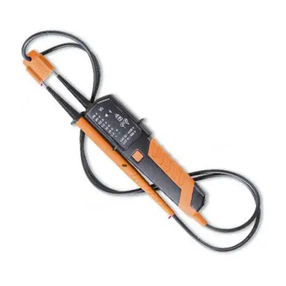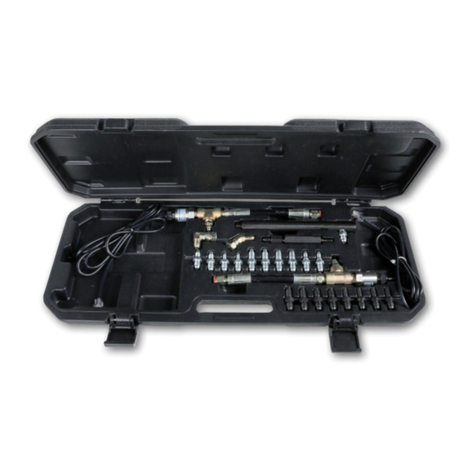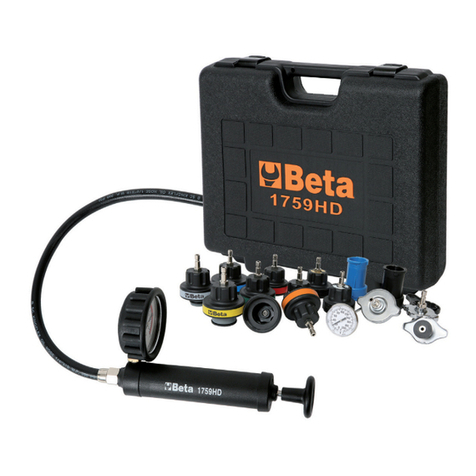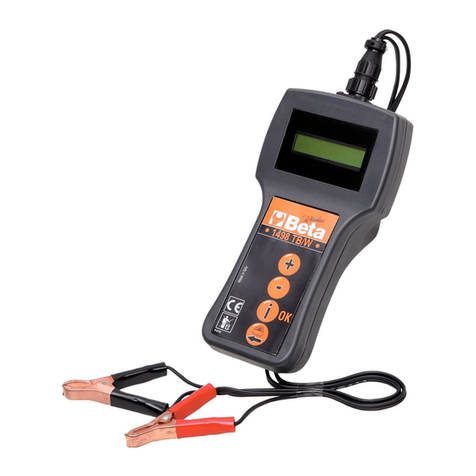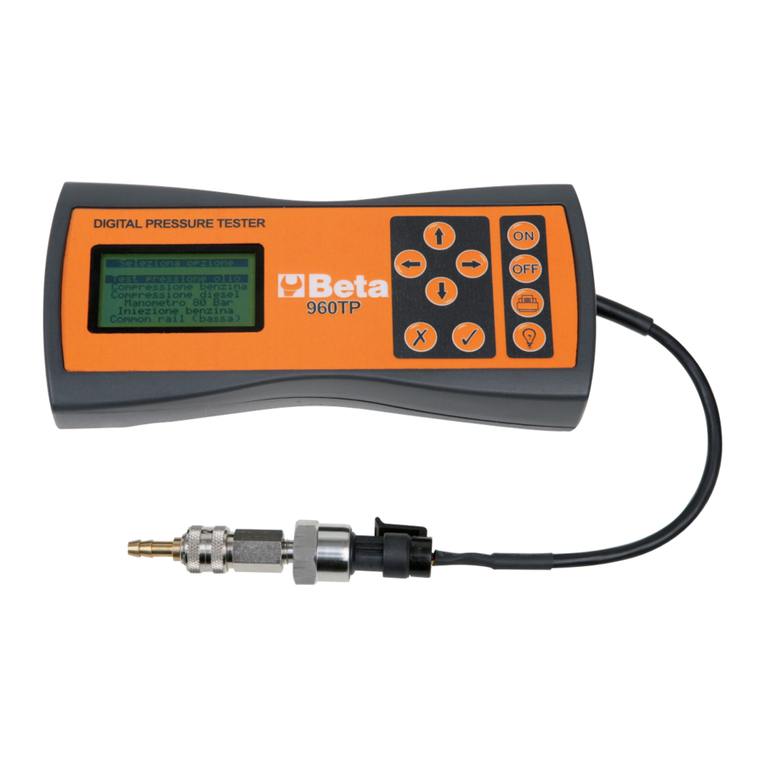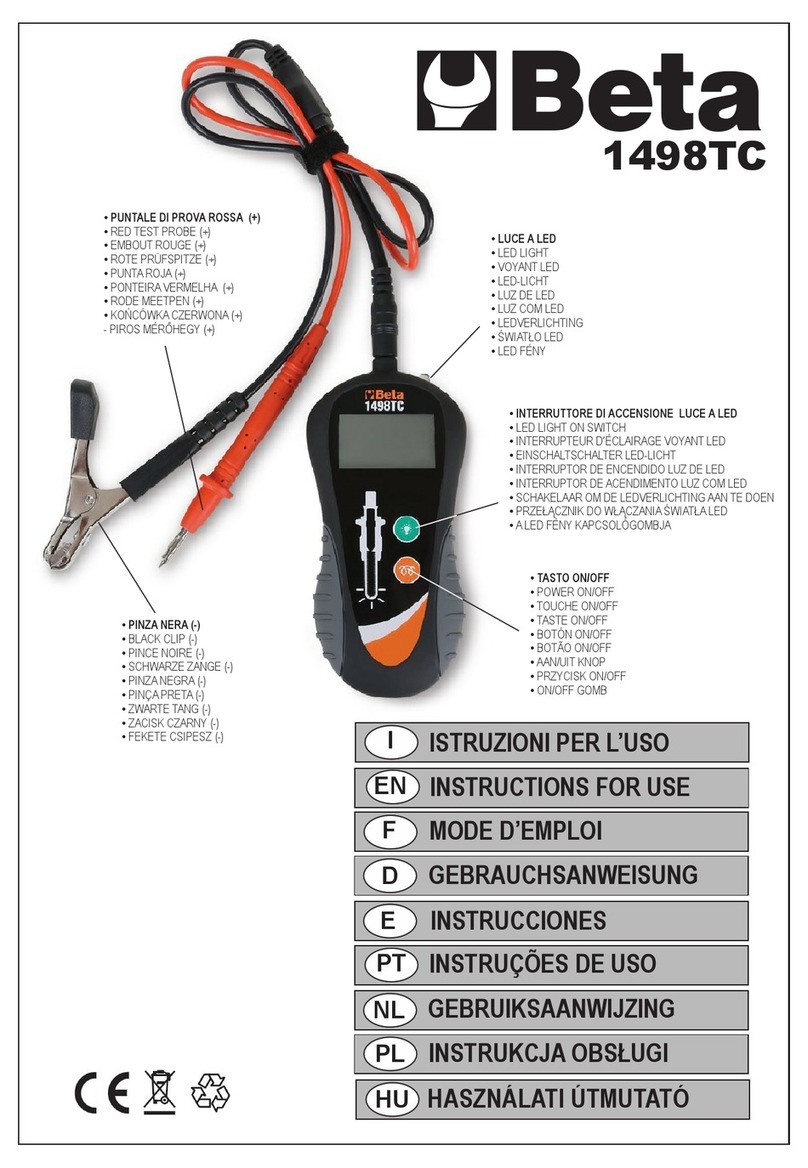SELEZIONE DELLA LINGUA
Per cambiare la lingua dell’analizzatore bisogna accedere al “Menu Congurazione”. Premere “Enter” e utilizzare i tasti ▼▲
per selezionare la voce “Lingua”, premere nuovamente “Enter”. Nella schermata successiva sarà possibile scegliere il linguag-
gio desiderato con i tasti ▼▲ e selezionarlo premendo nuovamente “Enter”.
FUNZIONE AIUTO [?]
Questa funzione permette di familiarizzare in qualsiasi momento con l’operazione che abbiamo selezionato sullo schermo del
tester. Descrive la funzione e la maniera giusta di procedere nell’utilizzo dell’analizzatore. Per attivare questa funzione basta
premere il tasto [?] e automaticamente comparirà una schermata che descrive la voce selezionata
ESEMPIO:
Se con i tasti ▼▲ vi posizionate sopra la voce “Menu Congurazione” e premete il tasto [?] comparirà la seguente descrizione:
“Questo menu permette di impostare la lingua visualizzata dal tester e inoltre di poter regolare la luminosità del display LCD”.
Analogamente se vi posizionate sopra una qualsiasi altra voce, l’opzione AIUTO [?] vi descriverà come utilizzare quella voce e/o
a cosa serve.
Per ritornare alla schermata precedente basterà premere “Exit”.
MEMORIA INTERNA
Il tester è dotato di una memoria interna in grado di registrare i dati dell’ultimo veicolo testato per poterli in seguito inserire nel
computer o riguardarli senza dover rieseguire il test.
Ogni qualvolta si desidera iniziare un nuovo test bisogna posizionarsi con i tasti ▼▲ sulla voce “Nuovo: Canc. Memoria” e
premere “Enter”. Una volta selezionata questa opzione il tester cancellerà tutti i dati presenti in memoria dell’ultimo test effet-
tuato. A questo punto sarà possibile iniziare una nuova serie di test sul veicolo (batteria, massa, avviamento o alternatore). Una
volta completato un test (esempio test batteria) è possibile continuare con gli altri test o ritornare al menu iniziale; se ritornate
al menu iniziale, ma volete proseguire il test precedentemente iniziato, selezionate con i tasti ▼▲ la voce “Continua Test…”
e premete “Enter”. Automaticamente il tester vi riporterà alla schermata che consente la selezione del tipo di test e potrete
proseguire con un test differente sul veicolo senza perdere i dati precedentemente salvati .
OPERAZIONI & USO TEST BATTERIA
1. Prima di testare una batteria in un veicolo, spegnete il veicolo, tutti gli accessori e i carichi. Chiudete tutte le portiere del
veicolo e lo sportello del bagagliaio.
ATTENZIONE: Dopo aver spento il motore del veicolo, accendere i fanali per circa 30 secondi in maniera tale da rimuo-
vere la carica superciale della batteria.
Nota: lo schermo non mostrerà nulla no a che il tester non sarà collegato alla batteria del veicolo.
2. Assicuratevi che i terminali delle batterie siano puliti. Puliteli con una spazzola metallica se necessario. Fissate il terminale a
pinza nera al terminale negativo della batteria del veicolo. Fissate il terminale a pinza rossa al terminale positivo della batteria
del veicolo.
Assicurarsi che vi sia un buon contatto tra le pinze del tester ed i poli della batteria per eseguire un test corretto.
3. Premete il tasto ▼▲ per selezionare “Nuovo: Canc. Memoria” o “Continua Test…”.. Premete il
tasto “Enter” per confermare. Premete il tasto ▼▲ per selezionare “Test Batteria”. Premete il
tasto “Enter” per confermare.
ATTENZIONE: Nel caso della presenza di carica superciale della batteria, il tester procederà
con la rimozione di essa. Se la carica superciale risulterà troppo elevata per essere rimossa,
il tester vi dirà di accendere i fanali per rimuoverla.
Selezionare Test ▲▼
Test Batteria
Test Massa
Test di Avviamento
Test Alternatore
3
ISTRUZIONI PER L’USO I
4. Premete il tasto ▼▲ per selezionare il tipo di batteria:
a. SLI [tipo WET] LIQUIDO STANDARD
b. AGM [Piana/Spirale]
Premete “Enter” per confermare la scelta.
Selezionare Batteria
SLI (Tipo Wet)
AGM (Flat/Spiral)
[Enter]per procedere













